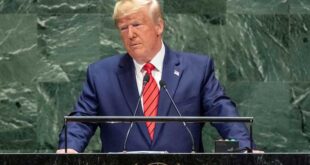By Christoph Reuter
Both men were Syrians — a taxi driver and his passenger. They met during an hour-long drive in April from the airport in the southern Turkish city of Adana toward the east. Within a few minutes, they realized that they were from the same place, the northern port city of Latakia, which is controlled by the Syrian regime.
They avoided direct questions for a while. Before, on the other side of the border, they may have shot at each other. But now they were sitting in the same car. Eventually, the driver began to tell his story. He had been a bank manager and had told jokes about Syrian dictator Bashar Assad. After an informer betrayed him to the government, a man from Syrian intelligence gave him a warning, saying: “Get out now. They’re coming to get you in half an hour.”
Then the second man told his story. He had been an architecture student. “I had nothing against Assad,” he said. But checkpoints had been erected everywhere in recent weeks, where young men were forcibly recruited into the army. “I didn’t want to die,” he explained. The driver chuckled briefly, and then the two men went silent for a while.
“It’s over,” the driver finally said. “Yes,” his passenger replied. They spent the rest of the trip discussing the best routes to Europe.
Can the Horrors Be Stopped?
A country is hemorrhaging people. Hundreds of thousands of Syrians are on the road, traveling to Germany, Sweden and the Netherlands, or they have already arrived, and millions will follow suit. The exodus is putting a long-ignored question back onto the political agenda in the West: What can be done to stop the horrors in Syria?
Four years after the beginning of the uprising, a quarter of a million are dead and the political proposals by the United Nations, the German foreign minister, the United States government and others sound very much like proposals in 2011: Negotiate, apply pressure and seek a political solution. The situation is complicated by announcements from France and Great Britain of their intention to participate in air strikes against the Islamic State (IS) in Syria. But what they overlook is that the overwhelming majority of Syrians are not fleeing from IS, but from Assad’s barrel bombs, the Syrian Air Force and the generally hopeless situation.
IS primarily controls sparsely populated desert areas in eastern Syria. According to reports by the Syrian Network for Human Rights, Assad’s soldiers killed about 11,500 people between January and August, while IS killed 1,800. Among civilians, at least 10 times as many people die as a result of the regime’s attacks than at the hands of IS.
IS has made adjustments to cope with the air strikes. Its troops now tend to operate in towns, in which they prevent the residents from fleeing by erecting checkpoints and imposing draconian punishments. This prevents Western forces from effectively attacking IS.
The Assad Question
The refugees are responsible for growing political pressure to find ways out of the war, but their plight does nothing to change the status quo, which has led to the failure of every negotiated solution to date. Russia and Iran want to keep Assad in power, and the West is unwilling to overthrow him and oppose the Russian veto in the UN Security Council or jeopardize Iran’s compliance with the nuclear treaty. Two UN special envoys have already failed to resolve this conflict situation, and a third one is heading in the same direction. Staffan de Mistura has announced new negotiations for October and wants to introduce decentralized task forces, but he has not even mentioned the central issue: Should the goal be to remove Assad or to allow him to remain in power?
The world had already made more headway in earlier negotiations. When influential Syrians from both camps met for secret negotiations at Château de Bossey on Lake Geneva in October 2013, everyone, after initial difficulties, was surprisingly in agreement. Even an advisor to Assad was acquiescent and was not opposed to a peaceful solution. “We will fight down to the last building in Damascus. But what happens after that? The country is ruined. No side can win or stop fighting.”
The meetings were hosted by Switzerland’s Center for Humanitarian Dialogue. As one participant recalls, both sides were exhausted and prepared to make extensive compromises. In the end, the negotiations failed because of one person: Assad. Everything was negotiable, but he had to go, the representatives of the opposition demanded. The participants agreed that a solution was in the hands of the Americans and the Russians.
If there is any solution for Syria anymore, it would have to be similar to the tentative plans suggested in 2013, which called for exiling Assad, his clan, key generals and their families. Those also included extensive amnesties for combatants on both sides, power to be handed over to local authorities — and a common fight against IS. But this type of solution would have required military pressure on Assad, which Washington was never willing to agree to. Even a proposal to install no-fly zones in several Syrian border regions, so that people there could survive without air strikes, was repeatedly rejected.
But then, in August of this year, there was a brief moment when Western diplomats hoped that Iran’s leadership could be willing to agree to Assad’s removal in return for concessions. The Iranians had already secured extensive control over what happened in Damascus by having generals and intelligence chiefs who opposed them removed.
One notable deposition involved the longtime head of Syria’s Republican Guard, Dhu al-Himma Shalish, a close relative of Assad. “With that, the Iranians have direct physical access to Bashar,” said one Western diplomat with good contacts in Damascus. The Iranians also could have deposed Assad, but they didn’t want to.
Meanwhile, the Russians have arrived. In recent days, several Russian navy transport ships have landed in Latakia harbor, fully loaded with armored vehicles and other military equipment. Some 300 soldiers with Russia’s 810th naval infantry brigade are reportedly also on board. Three giant Antonov 124 cargo aircraft and a passenger jet landed at the nearby airport. Mobile housing for 1,000 men and a command post to monitor air traffic have reportedly been installed. Russia is upping the ante on its already massive military aid for Assad.
It is doing so under the pretext of a joint fight with the West against the “terrorists.” But Russia has a very different notion of what constitutes a terrorist than the US or Europe. Putin subscribes to Assad’s definition, which ranges from rebel groups supported by the US to IS militants. Based on the involvement of Russian troops in fighting in the east of the Latakia province, it’s clear who Moscow sees as the prime target: Syrian rebels. The Islamic State isn’t to be found anyhere near that particular theater of battle.
Different Countries, Different Goals
It is unclear what President Vladimir Putin’s strategic goals are in Syria. Is he merely trying to secure Assad’s home region in the mountains between Latakia and Tartus, and preserve Russia’s only naval base in the Mediterranean? Or does Russia intend to re-establish its vassal Assad’s control over the entire country?
The Iranian Revolutionary Guards already failed in a similar attempt. In 2012, they began sending their own troops and combatants with the Lebanese Hezbollah group to Syria, as well as arranging for the deployment of thousands of Iraqis and Afghans. Despite these efforts, the Syrian regime is running out of troops. The fronts are softening in the north and south, and IS has been able to capture natural gas fields and the ancient city of Palmyra in the east. Analysts estimate that this year the Assad regime has lost about a fifth of the territory it controlled in 2014.
There has been little international support for the Syrian rebels — a product of the fact that individual countries are pursuing different goals. The US only wants to fight IS and has implemented a $500-million program to train Syrian fighters. Most of the 54 men in the first of these US-trained units were abducted by radicals with the al-Nusra Front, because the group believed it was the target of the campaign. Saudi Arabia and Qatar tend to fund Islamist groups, which the United States mistrusts. And Turkey is seeking allies for its war against Kurdish separatists with the Kurdistan Workers’ Party (PKK).
A negotiated solution still seems a long way off, at least as long as Assad remains in power. Negotiations can only succeed if both parties stand to benefit. But from the very beginning, Assad and his top leaders chose a path that permits only victory or defeat. And Russia supports them on this path.
Putin is now counting on those in the West who believe that the priority is to fight IS, and that this requires supporting Assad. But his ongoing rule is the original reason for the conflict. Besides, Assad is unable to fulfill these expectations because he controls less and less territory. He has no lack of weapons, aircraft or funds, but he does lack soldiers.
The only way Syria can survive as a nation is if the two large camps, consisting of the moderate rebels and the Syrian army, band together against IS to preserve the country. This could easily work without Assad, but not with him.
Failure to Act
Since the days of his father, dynasty founder Hafez Assad, fear was always a major component in Syria’s principle of rule. It not only includes subjects’ fear of those in power, but also their own followers’ fear of everyone else. The Alawite religious community, to which the Assads belong, makes up one-tenth of the Syrian population. The most effective way to preserve the Alawites’ unconditional loyalty was not preferential treatment but fear of the Sunni majority. And this fear was systematically stoked with such campaigns as the bloody suppression of a rebellion by the Muslim Brotherhood in Hama in 1982. Even after Hafez’s death, any attempt at conciliation was blocked. Fear of revenge by their enemies has turned the Alawites into perfect hostages of Assad. The president, in turn, fears that negotiations will lead to his demise, and that loyalties could be destroyed and pave the way for new protests, because tens of thousands of Alawites have also died defending the family dictatorship without the promised victory ever materializing.
Two years ago, it still would have been possible for the West to intervene on behalf of the moderate rebels. But skeptics feared that intervention in Syria would lead to more violence and deaths, the triumph of jihadist radicals and the collapse of public order. All of these things have occurred — not because, but despite the fact that the West did not intervene.
If US President Barack Obama had ordered air strikes on the military’s nerve centers following Assad’s poison gas attacks on the Damascus suburbs, the regime probably would have collapsed. At the time, intelligence services were already observing efforts by officers and soldiers to defect. But Obama apparently was unwilling to risk an overthrow of Assad and the resulting power vacuum.
But what could have been worse than what happened after that? In September 2013, IS had not yet begun its victory march, around 130,000 people who are now dead were still alive, and it would have been much easier to preserve the entire country than it is today.
There are many indications today that a partition of Syria is the most likely future scenario. Iran and Hezbollah have withdrawn their forces from large parts of the north and south since the beginning of the year. They want to focus on defending the core region controlled by Assad, which they can hold — the densely populated strip from Damascus to Latakia.
A partition of Syria would probably be the biggest favor the world could do for IS. A Russian-Iranian protectorate in the west would stand in the way of any unification of the entire country, and it would mean abandoning the rest of the country — to the delight of IS “Caliph” Abu Bakr al-Baghdadi, who knows that the Syrian rebels alone cannot defeat Islamic State.
No Way Back
The gradual dissolution of Syria makes it extremely difficult to find a solution for the entire country. Two other parties to the conflict have already taken control of large portions of the country. In the north, troops with the YPG, the Syrian branch of the PKK, control the three traditionally Kurdish areas along the Turkish border. And even though the Kurdish party leadership in Syria consistently denies wanting to establish its own state, this is precisely what Western intelligence officials believe it intends to do. This is why the Turkish government is doing everything in its power to prevent the YPG from capturing more territory. Hezbollah, in turn, has captured a broad strip of land along the Lebanese border in a move that could disrupt the country’s delicate confessional balance.
The hundreds of thousands of Syrian refugees apparently agree. It is often overlooked that their exodus to Europe has only just begun. Many Syrians were already leaving the country before, but now everyone wants to leave — not just opponents of the regime, but also those who had kept a low profile, Assad’s followers and supporters. Syrians in all political camps have lost faith in their country’s future.
The wars for control over the decaying country make a peaceful solution virtually impossible. These wars know no borders, as evidenced by IS’ campaign of conquest in Iraq and Ankara’s fight against the PKK. The longer all of this lasts, the more difficult it will be to stop Syria’s demise. And the longer the hundreds of thousands who have left remain in exile, the more unlikely they are to return. A bombed city can be rebuilt, but a destroyed country, abandoned by those who want to live a life of dignity, work and raise children, is a different story.
 Geostrategic Media Political Commentary, Analysis, Security, Defense
Geostrategic Media Political Commentary, Analysis, Security, Defense





